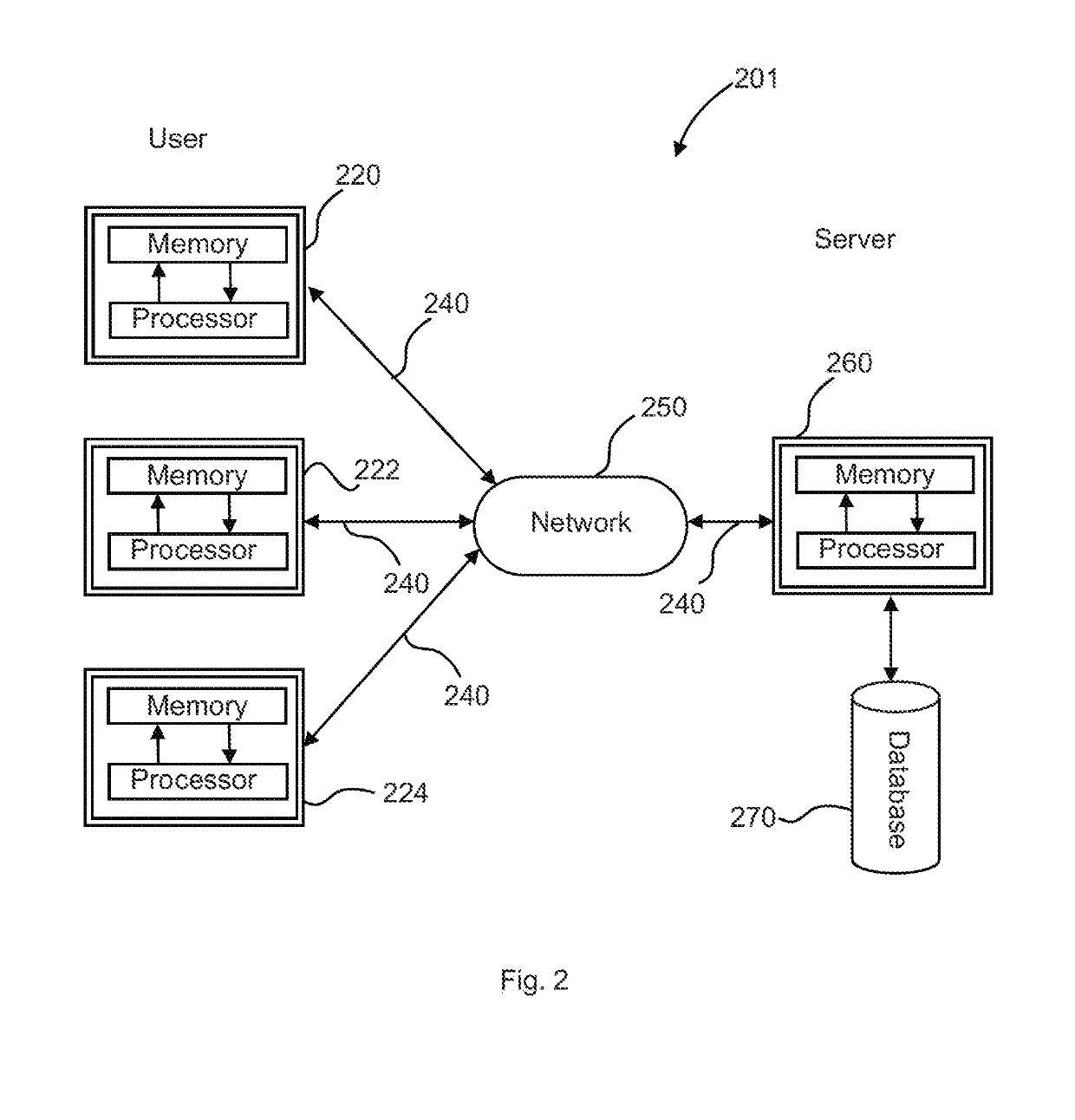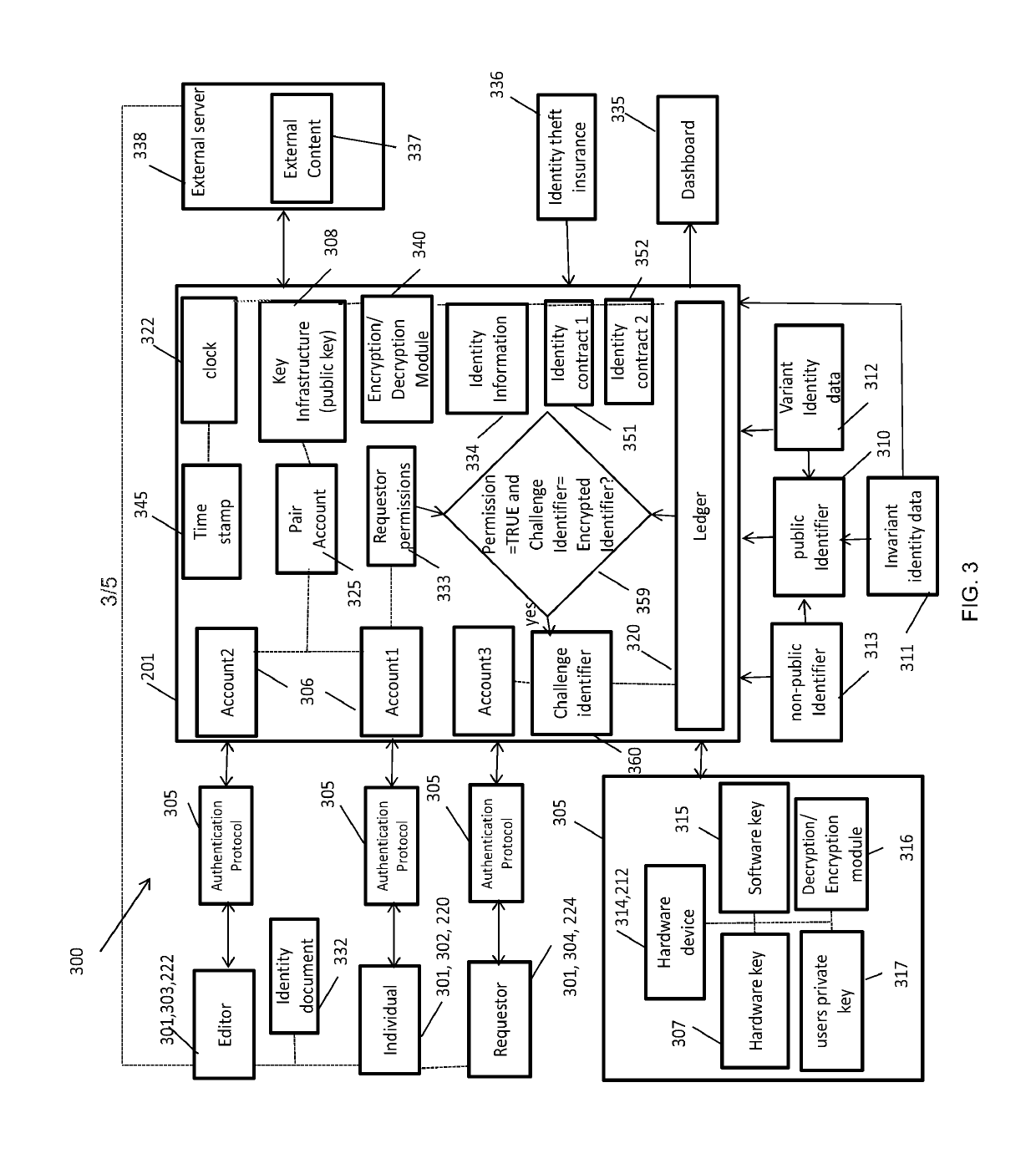System for digital identity authentication and methods of use
a digital identity and authentication system technology, applied in the field of systems to identify and authenticate individuals, can solve the problems of significant loss of time and cost to reestablish identity, fraud and identity thieves, and incomplete identity verification process, so as to achieve the effect of increasing security
- Summary
- Abstract
- Description
- Claims
- Application Information
AI Technical Summary
Benefits of technology
Problems solved by technology
Method used
Image
Examples
Embodiment Construction
[0091]In describing the exemplary embodiments of the present disclosure, as illustrated in FIGS. 1-5, specific terminology is employed for the sake of clarity. The present disclosure, however, is not intended to be limited to the specific terminology so selected, and it is to be understood that each specific element includes all technical equivalents that operate in a similar manner to accomplish similar functions. The claimed invention may, however, be embodied in many different forms and should not be construed to be limited to the embodiments set forth herein. The examples set forth herein are non-limiting examples, and are merely examples among other possible examples.
[0092]In order to understand the present disclosure certain variables and terms need to be defined, such as “Identity Verification”, “Identity Validation” and “Identity Authentication”, which are often used interchangeably, but actually have subtle differences in meaning.
[0093]Identity (data) Validation means ensur...
PUM
 Login to View More
Login to View More Abstract
Description
Claims
Application Information
 Login to View More
Login to View More - R&D
- Intellectual Property
- Life Sciences
- Materials
- Tech Scout
- Unparalleled Data Quality
- Higher Quality Content
- 60% Fewer Hallucinations
Browse by: Latest US Patents, China's latest patents, Technical Efficacy Thesaurus, Application Domain, Technology Topic, Popular Technical Reports.
© 2025 PatSnap. All rights reserved.Legal|Privacy policy|Modern Slavery Act Transparency Statement|Sitemap|About US| Contact US: help@patsnap.com



